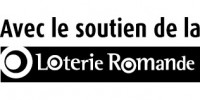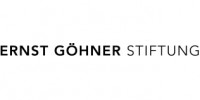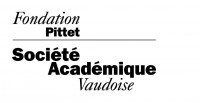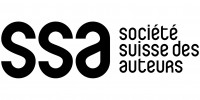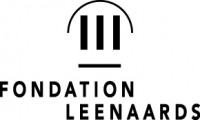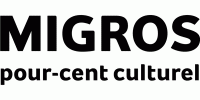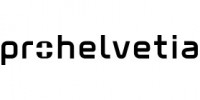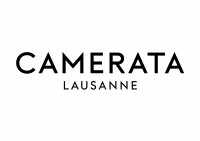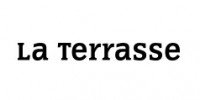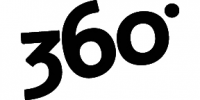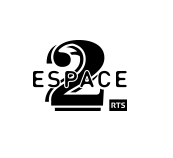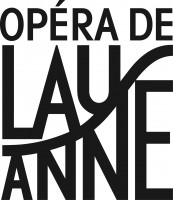Cie Philippe Saire
Av. de Sévelin 36
1004 Lausanne
Suisse
in permanent residency at Théâtre Sévelin 36
+41 21 620 00 12 info@philippesaire.ch
Premiere at Opéra de Lausanne November 2nd, 2012,
55 min.
The night’s delicate subtleties are followed by the crushing state of dawn. When Philippe Saire throws himself into Schönberg’s musical score, he transcends all notions of space and time, and it’s a great success. Nathalie Yokel, La Terrasse
For its autumn 2012 reopening, the Opéra de Lausanne commissioned Philippe Saire to produce Transfigured Night, a powerful and stirring piece about truth and forgiveness, shadows and lights, set in a marvellous décor of real animal antlers.
Philippe Saire worked with the Camerata de Lausanne, with Pierre Amoyal at the helm, to create a stirring work of choreography based on Arnold Schönberg’s romantic work, Transfigured Night. The pair then chose to contrast it with Antonio Vivaldi’s vibrant Concerto for two violins in A minor – the latter offering a lighter contrapuntal note to the more dramatic tones of the former.
Although several choreographers had already interpreted Schönberg’s work in the past, Philippe Saire tackled the project head on and delivered a sensual and intense version, which he set in the context of a hunt.
Both then worked to ensure that the romanticism of the music would not overwhelm the choreography, creating moments of silence and others dedicated to the music itself. This original approach led them to find a delicate balance between rejection and acceptance of the music.
Over 1 700 people attended the first performances at the Opéra de Lausanne and the Théâtre Sévelin 36, ensuring a successful start to the creation.
One piece, two versions
Transfigured Night is played to a recording of Schönberg and Vivaldi’s works. A symphonic version can also be considered, according to the theatre’s programme and configuration.
Coproduction Opéra de Lausanne
Schönberg’s musical score was inspired by a Richard Dehmel poem about confession and forgiveness. A woman confesses to her companion that she is pregnant by another man. He decides to accept it and shows much tenderness and comprehension. I chose to question the simplicity of this confession, to unfold this precise moment in the poem and to demonstrate the resistance and the pits that could entail from such a situation.
M point of view implied that such a confession, and such forgiveness, could only be given in the dark, in the in-between. In the full light, it would have been considered as an intolerable sin, which would have seen her crucified like a butterfly to a canvas. And the surprising introduction of Vivaldi’s glittering music emphasises this overexposure.
Strategies had to be defined to create a choreography that blended with the lyrically charged Transfigured Night. It required distancing myself from the musical score while also trying to make the music heard in the dance movements.
I began working with Richard Dehmel’s poem. Schönberg drew his music from it: I used it to create the choreography, before confronting it to the music. The triangulation was a liberating experience: as if Dehmel’s Nighthad enabled me to immerse myself in Schönberg’s own.
Finally, the idea of a hunt worked its way into the piece: a multitude of antlers conjured up the image of a forest, but also of a pending threat, like a snapshot of the wild and the living.
The night’s delicate subtleties are followed by the crushing state of dawn. When Philippe Saire throws himself into Schönberg’s musical score, he transcends all notions of space and time, and it’s a great success.
Nathalie Yokel, La Terrasse
The nuances of the twilight are translated phenomenally (…)
Franziska Buhre, Tanz, Berlin
The collusion of contemporary dance and classical music; of the baroque and the romantic; of night and day… All these triangulations create meaning and tensions and draw the edges of a black diamond.
Julien Burri, L’Hebdo
La Cie Philippe Saire tient à remercier la Camerata de Lausanne et ses musiciens et musiciennes, ainsi que ses partenaires et soutiens, l’équipe administrative et technique de l’Opéra de Lausanne, Jérémy Conne, Gérard Allaz, Thierry Sartoretti et l’équipe administrative et technique du Théâtre Sévelin 36.
Choreography
Philippe Saire
Choreography assistant
Philippe Chosson
Choreography in collaboration with the dancers
Philippe Chosson, Maëlle Desclaux, Pep Garrigues, Benjamin Kahn, Antonio Montanile
Dramatist
Roberto Fratini Serafide
Assistant
Émilie Bobillot
Set design
Sylvie Kleiber
Light design
Laurent Junod
Costumes
Isa Boucharlat
Make-up and wigs
Nathalie Monod
Technical director
Yann Serez (création), Vincent Scalbert (tournées)
Lighting
Pascal Di Mito
Stage management
Léo Piccirelli, Marie Gisep
Graphic design & photography
Philippe Weissbrodt
Video recording & teaser
Pierre-Yves Borgeaud
Musical works
Arnold Schönberg, Transfigured Night (Verklärte Nacht), op.4 in D minor, by the Leipziger Streichquartett (String Sextet), 1998, Musikproduktion Dabringhaus und Grimm,
Antonio Vivaldi, Concerto for two violins in A minor (RV 522), by Europa Galante & Fabio Biondi, 2003, EMI Records Ltd. / Virgin Classics
Choreography
Philippe Saire
Choreography assistant
Philippe Chosson
Choreography in collaboration with the dancers
Philippe Chosson, Maëlle Desclaux, Pep Garrigues, Benjamin Kahn, Antonio Montanile
Dramatist
Roberto Fratini Serafide
Assistant
Émilie Bobillot
Set design
Sylvie Kleiber
Light design
Laurent Junod
Costumes
Isa Boucharlat
Make-up and wigs
Nathalie Monod
Technical director
Yann Serez (création), Vincent Scalbert (tournées)
Lighting
Pascal Di Mito
Stage management
Léo Piccirelli, Marie Gisep
Graphic design & photography
Philippe Weissbrodt
Video recording & teaser
Pierre-Yves Borgeaud
Musical works
Arnold Schönberg, Transfigured Night (Verklärte Nacht), op.4 in D minor, by the Leipziger Streichquartett (String Sextet), 1998, Musikproduktion Dabringhaus und Grimm,
Antonio Vivaldi, Concerto for two violins in A minor (RV 522), by Europa Galante & Fabio Biondi, 2003, EMI Records Ltd. / Virgin Classics
